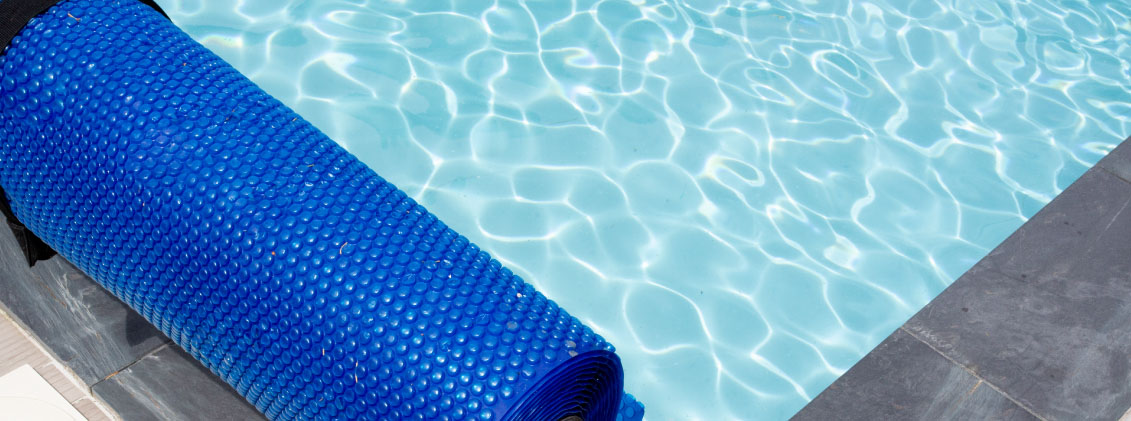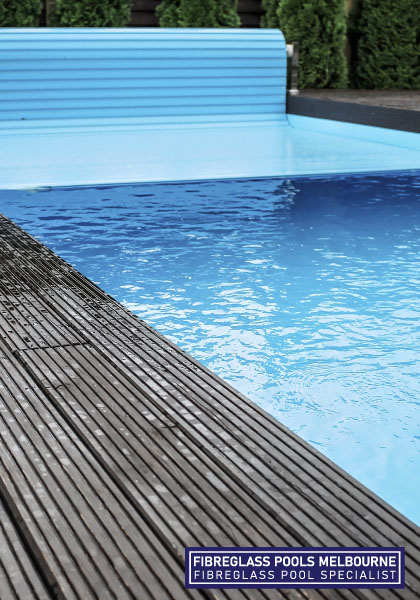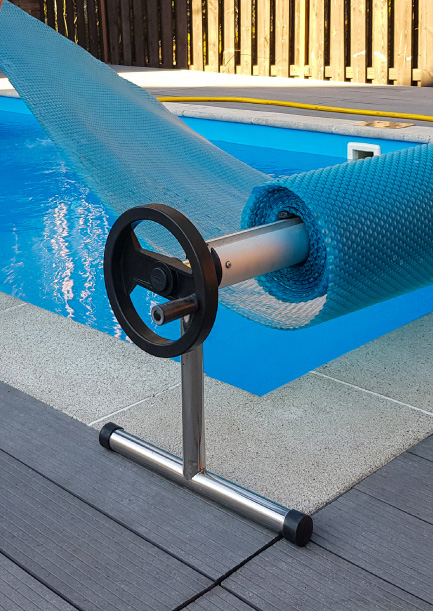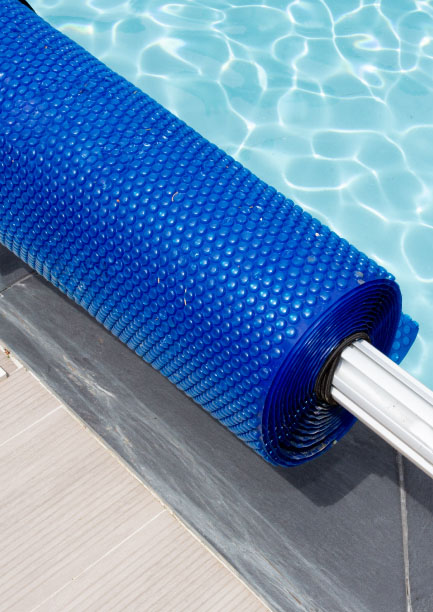Pool Cover Anchors - A Comprehensive Guide
From The Fibreglass Pools Melbourne Blog
Installing pool covers in the swimming pool is a great way to prevent accidental falls. These pool covers also prevent evaporation, conserve heat, and prevent leaves, twigs, and other debris from falling into the pool.

Pool cover anchors are an essential component in the installation of pool covers. Usually, these anchors are made of brass. They are drilled into the ground or the pool deck. These anchors create a spot for the pool cover to be firmly fastened and stretched over the surface of the pool. The housings on the brass anchors vary depending on whether they are anchored in grass, dirt, pavers, or concrete.
Pool cover anchors - the different types
Depending on the decking material, there are different kinds of pool cover anchors people can choose from.
Screw-type anchors
These are the standard anchors available for pool covers and, when closed, lie flat with the deck. They can be rapidly twisted open using a hex wrench or key. They are intended to be used with stone, slate, concrete, or similar non-wood solid decking.
Wood deck anchors
These are specifically designed to be used on wood as well as composite decks. At the top, the anchors have a wide flange to ensure that they stay firmly in the wood even as it weakens with age.
Paver tubes or lawn tubes
These are used for anchoring pool covers in pavers or grass. A method known as the “anchor-in-pipe technique” is used in the installation. In this technique, initially, aluminum tubes are drilled into the spot where anchors are to be installed. Then, the anchors are inserted into the tubes.

Pop-up anchors
These are the most practical anchors since they open and close with just a half-turn of a hex wrench or key. When closed, they rest flat against the deck. These solid anchors are ideal for decking made of stone and concrete.
Pool cover anchors can also be broadly classified into two types based on their malfunctioning.
1. Spinners
These are anchors that simply spin in their holes since they no longer have a grip. You can re-tamp the spinning anchor into the pool deck to solve this issue. To do this, first, separate the head and body of the pool cover anchor, place the tamping instrument inside, and tap it on the ground several times with a strong hammer. In case you do not have the tamping tool with you, you can always try the same technique with a dime or nickel. Place the nickel over the anchor head and hammer it down. It is also quicker than using the tamping tool. Remember not to hit the anchor head directly with the hammer.
2. Stickers
These are pool cover anchors that are stuck and will not turn up or down. There are three major reasons why this happens.
- Sometimes the hole into which the anchor is drilled might be a bit small, causing pressure to build up in the topmost threads. Worn drill bits are mostly the culprits, but this issue can be addressed during installation.
- Tiny fragments of concrete or sand inside the threads can also result in stickers. Periodic flushing and the application of some light oil such as WD-40 to the pool cover anchors can help to prevent this.
- Damaged hex holes are a third reason why anchors get stuck and sticky. Over time, the corners of the anchor’s central hexagonal hole can become rounded to the point that the hex key starts to spin. Try to lift the hex up by inserting the flathead screwdriver into it. You can also try using vice-grips if the screwdriver technique fails.

Issues with pool cover anchors
The different issues that can crop up with pool cover anchors include:
Smooth hex holes
If the hex hole is smooth, it is difficult to turn the hex wrench or key. Check to ensure the hex key is not stripped or rounded. After that, clean out the hole of any debris or dirt. You can use large flathead screwdrivers to repair smooth hex holes. Hammer the head of the screwdriver into the hole until it “bites” into the sides. Then, turn the screwdriver handle using pliers. If the anchor is not seizing up and the insert is elevated, use locking pliers to hold the edges and spin it. If you are successful in removing it, replace the old anchor with a new one.
Entire anchor cover spins
The pool cover anchors are only held in place by the upper 1/8′′ of the anchor. The anchor is typically placed into a 3/4″ hole with the anchor collar’s 13/16″ width press fitting into it. A spinner can happen due to improper tamping and holes that are too big. Use pliers or a hex key to remove the whole anchor from the hole. For a slightly elevated anchor, you can also use flathead screwdrivers. After lubricating the anchor, securely hold it in place using locking pliers or secure it in a compact vice, and then turn it with your free hand. If the pool cover anchor is spinning but is still functioning, you may either tamp it back into position or swap it out for a brand-new one. If you’re interested in landscaping your pool differently, check out our article on xeriscaping!
The anchor does not turn
Sometimes, the anchor becomes stuck and is unable to move up or down. Usually, the grit that has hardened in the threads or a bent outer body are the main causes of this problem. Try a 1/4′′ hex key with a tee-handle if the anchor key starts twisting or bending due to the force. This style of key can offer extra torque or leverage. The tip of the hex key should not be smooth. To re-tip, use a hacksaw to cut it and then smooth it on a concrete surface. Lightweight and penetrating oils like WD-40 can be used between the insert and the body. Allow some time for it to absorb before spinning it again. This is usually done when the anchor turns a few times and then gets stuck.
When faced with a stuck anchor, try turning it in one direction as much as you can, then in the reverse direction. Again, try turning in the initial direction. Although it is a difficult task, it aids in removing dirt from the threads. Use vice-grip or locking pliers to grip the slightly elevated pin’s edge and then move it back and forth.
In Conclusion
Pool anchor covers are an essential component of swimming pools. But it is essential that they remain sturdy at all times to ensure proper pool safety and poolside maintenance.
Pool Cover Anchors - A Comprehensive Guide
From The Fibreglass Pools Melbourne Blog
Installing pool covers in the swimming pool is a great way to prevent accidental falls. These pool covers also prevent evaporation, conserve heat, and prevent leaves, twigs, and other debris from falling into the pool.

Pool cover anchors are an essential component in the installation of pool covers. Usually, these anchors are made of brass. They are drilled into the ground or the pool deck. These anchors create a spot for the pool cover to be firmly fastened and stretched over the surface of the pool. The housings on the brass anchors vary depending on whether they are anchored in grass, dirt, pavers, or concrete.
Pool cover anchors - the different types
Depending on the decking material, there are different kinds of pool cover anchors people can choose from.
Screw-type anchors
These are the standard anchors available for pool covers and, when closed, lie flat with the deck. They can be rapidly twisted open using a hex wrench or key. They are intended to be used with stone, slate, concrete, or similar non-wood solid decking.
Wood deck anchors
These are specifically designed to be used on wood as well as composite decks. At the top, the anchors have a wide flange to ensure that they stay firmly in the wood even as it weakens with age.
Paver tubes or lawn tubes
These are used for anchoring pool covers in pavers or grass. A method known as the “anchor-in-pipe technique” is used in the installation. In this technique, initially, aluminum tubes are drilled into the spot where anchors are to be installed. Then, the anchors are inserted into the tubes.

Pop-up anchors
These are the most practical anchors since they open and close with just a half-turn of a hex wrench or key. When closed, they rest flat against the deck. These solid anchors are ideal for decking made of stone and concrete.
Pool cover anchors can also be broadly classified into two types based on their malfunctioning.
1. Spinners
These are anchors that simply spin in their holes since they no longer have a grip. You can re-tamp the spinning anchor into the pool deck to solve this issue. To do this, first, separate the head and body of the pool cover anchor, place the tamping instrument inside, and tap it on the ground several times with a strong hammer. In case you do not have the tamping tool with you, you can always try the same technique with a dime or nickel. Place the nickel over the anchor head and hammer it down. It is also quicker than using the tamping tool. Remember not to hit the anchor head directly with the hammer.
2. Stickers
These are pool cover anchors that are stuck and will not turn up or down. There are three major reasons why this happens.
- Sometimes the hole into which the anchor is drilled might be a bit small, causing pressure to build up in the topmost threads. Worn drill bits are mostly the culprits, but this issue can be addressed during installation.
- Tiny fragments of concrete or sand inside the threads can also result in stickers. Periodic flushing and the application of some light oil such as WD-40 to the pool cover anchors can help to prevent this.
- Damaged hex holes are a third reason why anchors get stuck and sticky. Over time, the corners of the anchor’s central hexagonal hole can become rounded to the point that the hex key starts to spin. Try to lift the hex up by inserting the flathead screwdriver into it. You can also try using vice-grips if the screwdriver technique fails.

Issues with pool cover anchors
The different issues that can crop up with pool cover anchors include:
Smooth hex holes
If the hex hole is smooth, it is difficult to turn the hex wrench or key. Check to ensure the hex key is not stripped or rounded. After that, clean out the hole of any debris or dirt. You can use large flathead screwdrivers to repair smooth hex holes. Hammer the head of the screwdriver into the hole until it “bites” into the sides. Then, turn the screwdriver handle using pliers. If the anchor is not seizing up and the insert is elevated, use locking pliers to hold the edges and spin it. If you are successful in removing it, replace the old anchor with a new one.
Entire anchor cover spins
The pool cover anchors are only held in place by the upper 1/8′′ of the anchor. The anchor is typically placed into a 3/4″ hole with the anchor collar’s 13/16″ width press fitting into it. A spinner can happen due to improper tamping and holes that are too big. Use pliers or a hex key to remove the whole anchor from the hole. For a slightly elevated anchor, you can also use flathead screwdrivers. After lubricating the anchor, securely hold it in place using locking pliers or secure it in a compact vice, and then turn it with your free hand. If the pool cover anchor is spinning but is still functioning, you may either tamp it back into position or swap it out for a brand-new one. If you’re interested in landscaping your pool differently, check out our article on xeriscaping!
The anchor does not turn
Sometimes, the anchor becomes stuck and is unable to move up or down. Usually, the grit that has hardened in the threads or a bent outer body are the main causes of this problem. Try a 1/4′′ hex key with a tee-handle if the anchor key starts twisting or bending due to the force. This style of key can offer extra torque or leverage. The tip of the hex key should not be smooth. To re-tip, use a hacksaw to cut it and then smooth it on a concrete surface. Lightweight and penetrating oils like WD-40 can be used between the insert and the body. Allow some time for it to absorb before spinning it again. This is usually done when the anchor turns a few times and then gets stuck.
When faced with a stuck anchor, try turning it in one direction as much as you can, then in the reverse direction. Again, try turning in the initial direction. Although it is a difficult task, it aids in removing dirt from the threads. Use vice-grip or locking pliers to grip the slightly elevated pin’s edge and then move it back and forth.
In Conclusion
Pool anchor covers are an essential component of swimming pools. But it is essential that they remain sturdy at all times to ensure proper pool safety and poolside maintenance.


